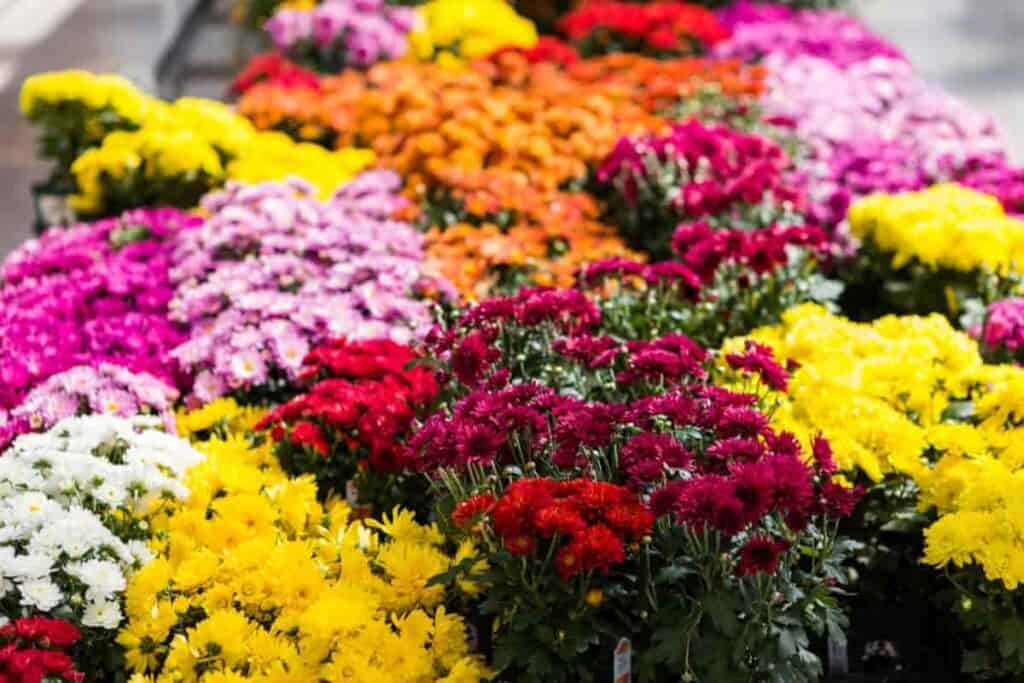Do you toss out potted chrysanthemums after they have finished flowering? If you do, you are throwing away a potential mum’s garden, for every plant will yield many cuttings for next spring’s planting. This past summer we enjoyed a lovely pink patch of 24 mums all derived from one Thanksgiving gift plant!
Greenhouse gardeners usually like to take chrysanthemum cuttings in late March or early April. This is because greenhouse space is precious, and since mums root rapidly, cuttings taken then are ready to set out at spring planting time.

The indoor gardener who has some space to spare need not be calendar conscious when he takes cuttings. Cuttings taken in late fall, early winter, or spring will also be ready for planting when the weather is frost free.
Chrysanthemums are among the easiest plants to propagate from cuttings. Professional growers use the top four inches of the plants for cuttings and under ideal conditions, these will root in five to ten days and be ready for potting as soon as roots are about one-half inch long.
Since the hobby gardener often has more time than money, he can afford to use every available inch of the plant for cuttings and wait somewhat longer for the smaller cuttings to grow.
Any part of the mum stem having at least one node and a leaf with a growing bud tip can be used for cutting material. Some of the hardwood cuttings take longer to root. A few may not root at all, but all are worth a try.
How To Take Cuttings
Use a sharp knife for taking cuttings. If you want only a few plants, take four- to five-inch cuttings from the top of each stalk, after you have removed the old bloom. If you want a lot of cuttings, cut between the nodes or joints leaving a pair of leaves or a single leaf and its bud to each cutting.
What’s left of the old plant can often be saved, too, by removing it from the pot and sinking it in the soil of a cold frame, or even outdoors in a protected spot. Survival depends on the variety and the kind of winter you have.
Dust the cuttings with a rooting agent (like Rootone) and root them in moist vermiculite, sphagnum moss, or horticultural grade perlite. Cuttings will root in the sand too but this usually dries out too fast to work well in the average window garden. Save space by planting several cuttings in a single large azalea or bulb pot, cake pan, or wooden flat.
Space them so leaves are not touching, to forestall rot which crowding and poor ventilation may cause. Cover the cuttings with transparent plastic or glass to heighten humidity and hasten to root.
Set the planted cuttings in good light but not direct sun. If the temperature is right they’ll root at a north window as well as at an east one. If you garden under fluorescent lights, set the cuttings about as close to the tubes as you do leaf-cuttings of African violets, begonias, or gloxinias. Give them 14 to 16 hours of artificial light per day.
An ideal temperature is 60° to 65° degrees Fahrenheit, but I find mum root well under average household temperatures (70° to 75° degrees) if humidity is high enough.
Larger cuttings root fast and may be ready to transplant in two to three weeks. Single leaf cuttings may take six weeks to become ready. Transplant rooted cuttings to two-inch pots of moisture retentive soil.
Any mixture you use for African violets or begonias will do nicely. If you have no preferred mixture, use the kind your garden store recommends, or mix your own from equal parts of garden loam, peat moss, and sand.
Give Sun, Humidity
After transplanting, place the cuttings in a sunny east or south window. Maintain humidity by sinking the potted plants into a box of moistened sand or peat moss. Fertilize them every ten days with a soluble fertilizer, and plant them outside when frost danger has passed.
Usually, all cuttings will bloom the same color as the parent plant, so it’s safe to plant them where you want a specific garden color.
You can use this procedure also with the chrysanthemum pieces you nip off during the summer as you prune plants to make them bushier.
44659 by Peggie Schulz
